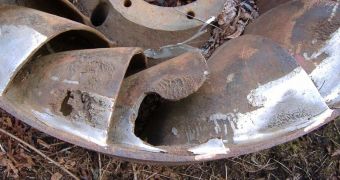The permanent interest towards the development of renewables, combined with the proper financial support, led to the birth and implementation of an innovative kind of hydropower turbines which are both energy efficient and fish-friendly.
Governmental funding has played a key part in this breakthrough, since its aid has powered the Department of Energy and its partners, the Electric Power Research Institute (EPRI) along with other companies which operate on the hydropower market to start some tests that were supposed to test the utility of the new fish-friendly devices, in 2009.
No gadget can call itself eco-friendly if it puts the safety and wellbeing of the fish population in danger. The manufacturers are aware of this fact and know that no individual or green company would invest in a water turbine which functions efficiently while chopping fish off.
Therefore, they joined efforts to decrease the percentage of fish mortality correlated with their work.
At first, fish-friendly devices cured this problem but also displayed a lower level of efficiency. Their progress preserved the fish population, yet it implied the loss of 8,500 megawatt-hours of production every year.
While evaluating the situation, experts faced the challenge of designing a new kind of water turbines which wouldn't affect the ecosystem and would also define themselves as a commercially competitive innovation.
According to the people behind this project, they succeeded in developing such a fish-friendly prototype which manages to spare the lives of up to 98% of the creatures, while converting up to 94% of the water's power into electricity.
The main difference between the two kinds of turbines, the deadly ones and the green innovations, are shape, size and speed.
The new Alden turbines have only three blades, compared with the 18 fast-spinning, sharp blades displayed by its predecessors, don't have gaps, are larger and rotate slower, allowing fish to swim for their lives.

 14 DAY TRIAL //
14 DAY TRIAL //